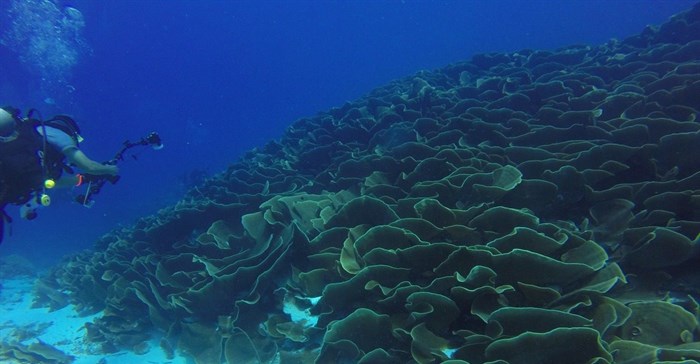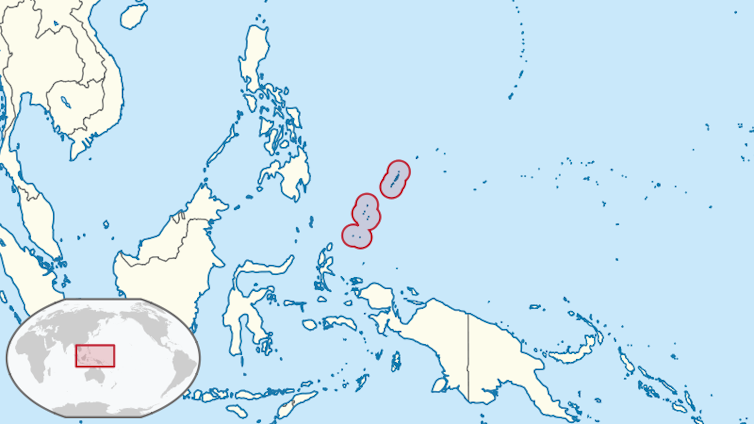
The Palauan authorities burned three of their boats at sea, while the crews were escorted on the remaining vessel to Palau’s maritime boundary. Whether they made it over the horizon seemed of little concern to the government. Such fishermen are often trafficked as slaves and while they were held they had no communication with loved ones at home. As one humanitarian NGO worker told me: “They’re victims and they need to be dealt with as victims. Most have just signed up to catch fish. They don’t know where they’re going. They don’t know how to navigate. They have no options.”
Nonetheless, this method of repatriating Vietnamese crews is standard practice. Since 2014, numerous crews have had their boats sunk and been repatriated in this way.
The reserve has attracted many of the world’s largest conservation and development NGOs. It has received more than $90m in pledges, mostly from corporate donors, charitable trusts and government agencies in Australia, Japan and the US.
Yet the scientific rationale behind the sanctuary is questionable. Consider Palau’s coral reefs, which are among the most biodiverse places in the entire ocean and remain the ultimate symbol of the region’s pristine waters. They are the key lure for “high-end” sports-fishers, divers and yachters to the islands and, thanks to the sanctuary, many more are expected.

The reefs feature heavily in promotional materials and strategic plans for the marine reserve. Yet the sanctuary doesn’t actually begin until 12 nautical miles from the coast – too far from shore for any coral reefs. Access to the reefs is regulated through various other pieces of legislation but, unlike the sanctuary, those other regulations were not designed to promote tourism.
Palau’s conservation efforts are part of a vision to become a tourist destination for the super-rich. New laws and tax incentives mean only five-star hotels will get planning approval in future while the country’s famous Rock Islands, a UNESCO World Heritage site, will likely prove out of bounds to anyone without a private yacht. A significant airport expansion plan, managed by the Japanese, will likely see the overall number of tourists increase substantially.
This begs the question of what the sanctuary is for. If it is in place to protect the reef, then it isn’t doing a very good job as it doesn’t cover the right area. If it is there to protect the offshore environment, then instead of using it to boost tourism, Palau should also limit the numbers of international arrivals who largely go sport fishing further offshore.
Out to sea, Palau is planning to develop the often uninhabited outcrop of Helen Reef, 350 miles south of Palau’s main islands, ostensibly for monitoring and surveillance. But in addition to a dock, fuel depot and rangers station, Palau’s project leaders say potential expansion could include tourist developments, including a dive resort complex. Japanese NGOs, the Nippon Foundation and the Sasakawa Peace Foundation have also contributed to Palau’s coastguard, and the latter recently donated a new 40-metre patrol vessel, the PSS Kedam and has previously helped Palau survey the area.
Waters surrounding Helen Reef are contested with neighbouring Indonesia. The geopolitical implications of this are still unclear, though it is likely that Japan has a significant interest in the sanctuary acting as a buffer to Chinese expansion in the region. Palau’s president, meanwhile, has stated that the marine sanctuary is “not just a conservation policy; it is also a national security policy”.

Bearing in mind this latter motivation, the president has sponsored a plan to adopt similar conservation enclosures around at least 30% of the world’s oceans. This position is no longer radical – it’s the mainstream. Since 2006, seven Pacific island nations have designated huge swathes of their oceans as protected areas. Michelle Grady, from the Pew Charitable Trust, recently suggested the 30% target “had the status of expert advice, much like the science underpinning the Intergovernmental Panel on Climate Change”.
![]() But such bold targets can serve to promote heavy-handed, perhaps even violent conservation. But unless consumption is reined in at home, and the drivers of poverty and slavery are tackled out to sea, few will benefit except the super-rich in search of paradise.
But such bold targets can serve to promote heavy-handed, perhaps even violent conservation. But unless consumption is reined in at home, and the drivers of poverty and slavery are tackled out to sea, few will benefit except the super-rich in search of paradise.

The Conversation Africa is an independent source of news and views from the academic and research community. Its aim is to promote better understanding of current affairs and complex issues, and allow for a better quality of public discourse and conversation.
Go to: https://theconversation.com/africa